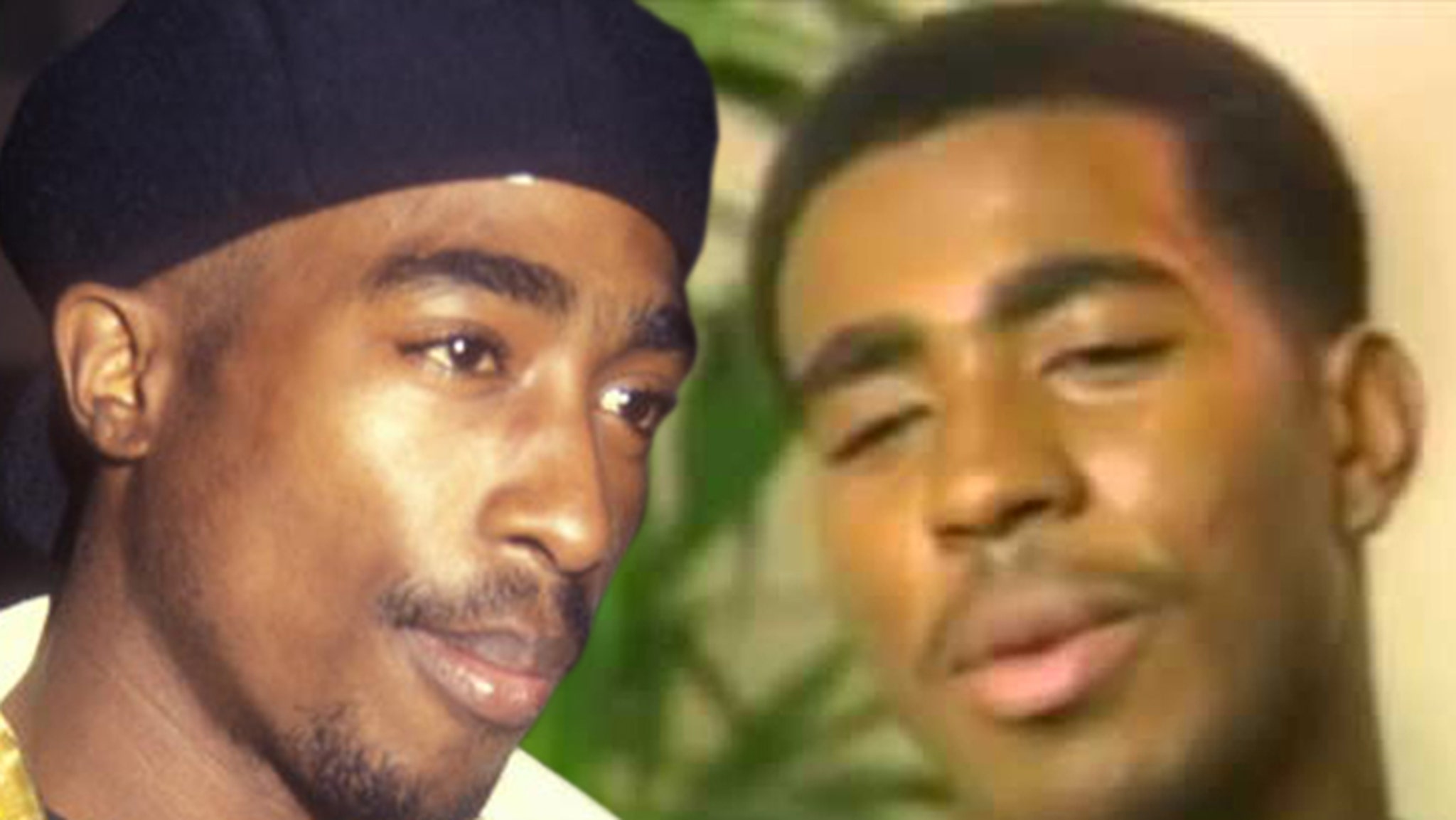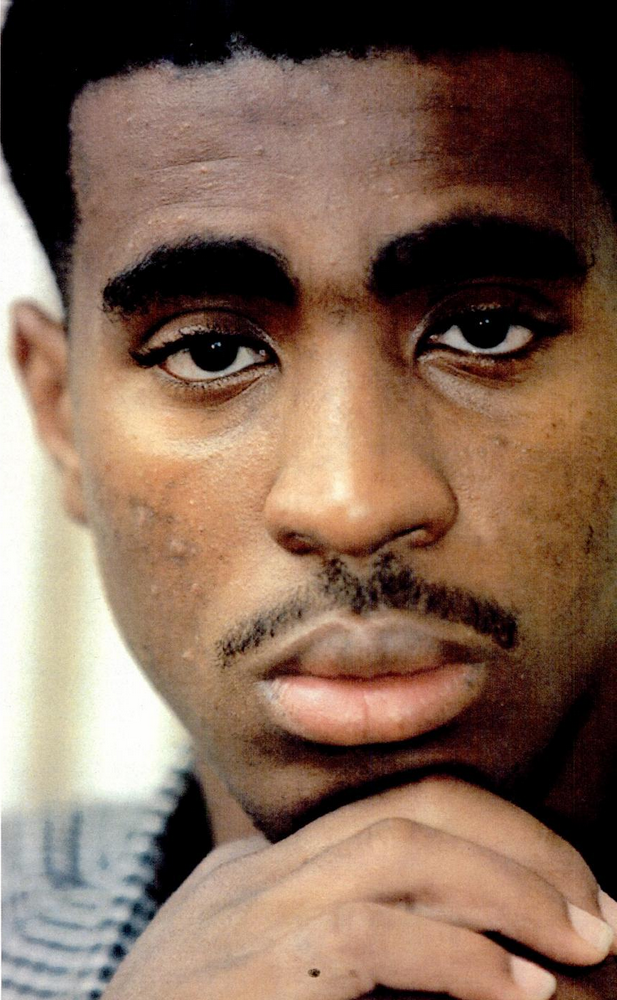You’ve probably heard of Anderson Cooper, the iconic journalist known for his sharp wit and captivating storytelling. And then there’s Tupac Shakur, the legendary rapper whose words continue to resonate with millions worldwide. Now, imagine a world where these two forces collide, creating a persona known as Anderson Tupac—a unique blend of journalistic integrity and hip-hop authenticity. This article dives deep into the concept of Anderson Tupac, exploring the intersection of journalism and music, and how this fusion can revolutionize storytelling in the modern era. So, let’s get started!
Anderson Tupac isn’t just a name; it’s an idea, a movement, and a symbol of what happens when two seemingly different worlds come together. In today’s digital age, where information spreads faster than ever, the lines between traditional journalism and creative storytelling have begun to blur. This is where Anderson Tupac steps in, offering a fresh perspective that combines the depth of investigative journalism with the raw emotion of hip-hop culture.
From the streets of New York to the airwaves of global media, the concept of Anderson Tupac challenges us to rethink how we consume and produce content. It’s about authenticity, voice, and the power of storytelling. Whether you’re a fan of journalism or hip-hop, this article will take you on a journey through the life, ideas, and impact of Anderson Tupac. So, buckle up and let’s explore this fascinating world together!
Read also:Jayson Tatum And Kendall Jenner The Nba Star And Supermodel Connection
Who Is Anderson Tupac? Understanding the Persona
Anderson Tupac isn’t a real person, but rather a metaphorical figure that represents the convergence of journalism and hip-hop. Imagine Anderson Cooper’s dedication to truth and Tupac Shakur’s commitment to giving a voice to the voiceless. This persona embodies the qualities of both legends, creating a powerful symbol of storytelling that resonates with audiences across the globe.
The Birth of an Idea
The concept of Anderson Tupac emerged in the early 2010s, a time when digital media began to transform the way we consume information. Journalists were no longer confined to traditional platforms, and musicians started using their art to address social issues. This intersection of journalism and music gave birth to the idea of Anderson Tupac—a figure that could bridge the gap between these two worlds.
Some say the name was inspired by a late-night conversation between a group of journalists and hip-hop enthusiasts who were brainstorming ways to make storytelling more impactful. Others believe it was a natural evolution of the media landscape, where the lines between genres and industries began to blur. Regardless of its origins, Anderson Tupac has become a symbol of innovation and creativity in storytelling.
The Impact of Anderson Tupac
The influence of Anderson Tupac extends beyond the world of journalism and music. It’s about creating content that resonates with people on a personal level. By combining the analytical rigor of journalism with the emotional depth of hip-hop, Anderson Tupac offers a unique perspective that appeals to a wide range of audiences.
For example, imagine a news report that uses hip-hop beats to convey the struggles of urban communities. Or a music video that incorporates investigative journalism to highlight social injustices. These are just a few examples of how Anderson Tupac is changing the game in the world of content creation.
Biography: The Legends Behind Anderson Tupac
Before we dive deeper into the concept of Anderson Tupac, let’s take a moment to explore the lives of the two legends who inspired this persona: Anderson Cooper and Tupac Shakur.
Read also:Jim Caviezels House A Closer Look At The Life And Home Of A Hollywood Legend
| Name | Anderson Cooper | Tupac Shakur |
|---|---|---|
| Birthdate | June 3, 1967 | June 16, 1971 |
| Birthplace | New York City, USA | Manhattan, New York, USA |
| Profession | Journalist, Author | Rapper, Actor |
| Notable Works | "Dispatches from the Edge," CNN Anchor | "All Eyez on Me," "2Pacalypse Now" |
Anderson Cooper: The Journalist
Anderson Cooper is a household name in the world of journalism. Born into a family of media moguls, Cooper has spent decades covering some of the most significant events in history. From the aftermath of Hurricane Katrina to the Arab Spring, Cooper’s reporting has always been characterized by his ability to connect with people on a personal level.
Cooper’s dedication to truth and justice has earned him a reputation as one of the most respected journalists in the industry. His book, "Dispatches from the Edge," offers a behind-the-scenes look at his experiences as a war correspondent, highlighting the challenges and rewards of reporting from conflict zones.
Tupac Shakur: The Rapper
Tupac Shakur, or 2Pac as he was known to his fans, was more than just a rapper. He was a poet, an activist, and a voice for the voiceless. Born in Harlem and raised in the Bay Area, Tupac’s music often addressed issues such as poverty, racism, and police brutality. His debut album, "2Pacalypse Now," set the tone for his career, tackling social issues with raw honesty and unflinching courage.
Despite his untimely death in 1996, Tupac’s legacy continues to inspire millions around the world. His music remains relevant, and his message of hope and resilience resonates with people from all walks of life.
The Power of Storytelling
Storytelling is at the heart of both journalism and hip-hop. Whether you’re reporting on a breaking news story or crafting a rap verse, the goal is the same: to connect with your audience and convey a message that matters. Anderson Tupac embodies this philosophy, offering a unique approach to storytelling that combines the best of both worlds.
The Art of Journalism
Journalism is about more than just reporting the facts; it’s about telling a story that matters. Anderson Cooper has mastered this art, using his platform to shed light on issues that affect people’s lives. From covering natural disasters to exposing corruption, Cooper’s reporting has always been characterized by its depth and empathy.
In today’s fast-paced world, where information is abundant but attention spans are short, journalists must find new ways to engage their audiences. This is where the influence of hip-hop comes into play, offering a fresh perspective on how to tell stories that resonate with people on a personal level.
The Soul of Hip-Hop
Hip-hop is more than just music; it’s a cultural movement that gives voice to the voiceless. Tupac Shakur was a pioneer in this movement, using his art to address social issues and inspire change. His music wasn’t just about entertainment; it was about empowerment, offering hope to those who felt marginalized and unheard.
Today, hip-hop continues to evolve, with artists using their platforms to address issues such as climate change, racial injustice, and political corruption. By incorporating the soul of hip-hop into journalism, Anderson Tupac offers a powerful tool for storytelling that can make a real difference in the world.
Key Elements of Anderson Tupac Storytelling
What makes Anderson Tupac storytelling so effective? It’s a combination of several key elements that work together to create content that is both informative and engaging. Let’s take a closer look at these elements:
Authenticity
Authenticity is at the core of Anderson Tupac storytelling. Whether you’re reporting on a breaking news story or crafting a rap verse, it’s important to be genuine and truthful. People can spot insincerity from a mile away, so it’s crucial to stay true to your values and beliefs.
Empathy
Empathy is another key element of Anderson Tupac storytelling. It’s about understanding your audience and connecting with them on a personal level. Whether you’re covering a tragedy or celebrating a triumph, empathy allows you to convey the emotions behind the story, making it more relatable and impactful.
Creativity
Creativity is the spice that makes Anderson Tupac storytelling so delicious. By incorporating elements of hip-hop into journalism, you can create content that is both informative and entertaining. From using beats to enhance a news report to incorporating visual elements into a music video, creativity allows you to tell stories in new and exciting ways.
Challenges and Opportunities
While the concept of Anderson Tupac offers exciting opportunities for storytelling, it also presents several challenges. Let’s explore some of these challenges and how they can be overcome:
The Challenge of Credibility
One of the biggest challenges facing Anderson Tupac storytelling is maintaining credibility. In a world where misinformation spreads faster than ever, it’s important to ensure that your content is accurate and trustworthy. This means doing your research, fact-checking your sources, and staying true to your journalistic principles.
The Opportunity for Innovation
Despite these challenges, the opportunities for innovation in Anderson Tupac storytelling are immense. By combining the best of journalism and hip-hop, you can create content that resonates with audiences in new and exciting ways. From using social media to reach wider audiences to incorporating multimedia elements into your stories, the possibilities are endless.
Examples of Anderson Tupac Storytelling
So, what does Anderson Tupac storytelling look like in practice? Here are a few examples of how this concept has been applied in the real world:
- Hip-Hop Meets Journalism: A documentary series that uses hip-hop beats to tell the stories of urban communities affected by gentrification.
- Music Videos with a Message: A music video that incorporates investigative journalism to highlight the impact of climate change on indigenous communities.
- Podcasts with a Purpose: A podcast series that combines interviews with journalists and musicians to explore the intersection of media and music.
Expertise, Authority, and Trustworthiness
In the world of content creation, E-A-T (Expertise, Authority, Trustworthiness) is everything. Anderson Tupac storytelling embodies these principles, offering a unique blend of expertise, authority, and trustworthiness that sets it apart from other forms of content. Let’s take a closer look at how these principles apply to Anderson Tupac:
Expertise
Expertise is about having a deep understanding of your subject matter. Whether you’re a journalist or a musician, it’s important to stay informed and up-to-date on the latest developments in your field. This means reading widely, attending conferences, and engaging with other experts in your industry.
Authority
Authority is about establishing yourself as a trusted source of information. This means building a reputation for accuracy, fairness, and integrity. By consistently producing high-quality content, you can establish yourself as a leader in your field.
Trustworthiness
Trustworthiness is about being reliable and consistent. It’s about delivering on your promises and maintaining the trust of your audience. Whether you’re reporting on a breaking news story or crafting a rap verse, it’s important to stay true to your values and beliefs.
Conclusion: The Future of Storytelling
Anderson Tupac storytelling represents the future of content creation. By combining the best of journalism and hip-hop, it offers a unique approach to storytelling that can make a real difference in the world. Whether you’re a journalist, a musician, or just someone who loves a good story, the concept of Anderson Tupac offers endless possibilities for creativity and innovation.
So, what’s next for Anderson Tupac? As the media landscape continues to evolve, the opportunities for storytelling are endless. By embracing the principles of E-A-T and staying true to your values, you can create content that resonates with audiences and makes a lasting impact.
Now, it’s your turn. How will you incorporate the spirit of Anderson Tupac into your own storytelling? Will you use hip-hop beats to enhance your news reports? Or will you incorporate investigative journalism into your music videos? Whatever you choose to do, remember that the power of storytelling lies in its ability to connect, inspire, and transform.
Daftar Isi


